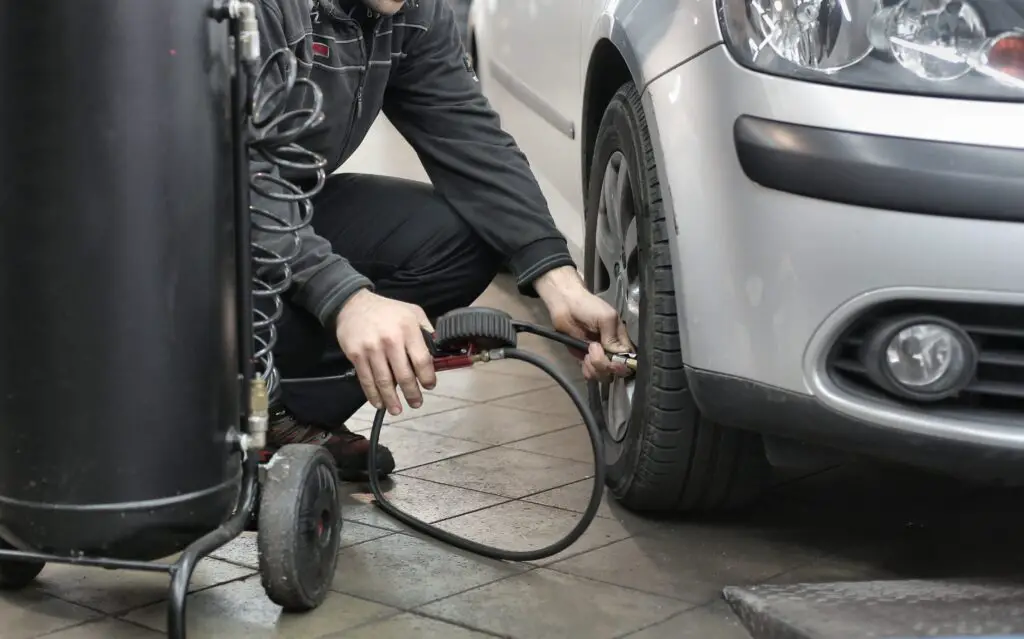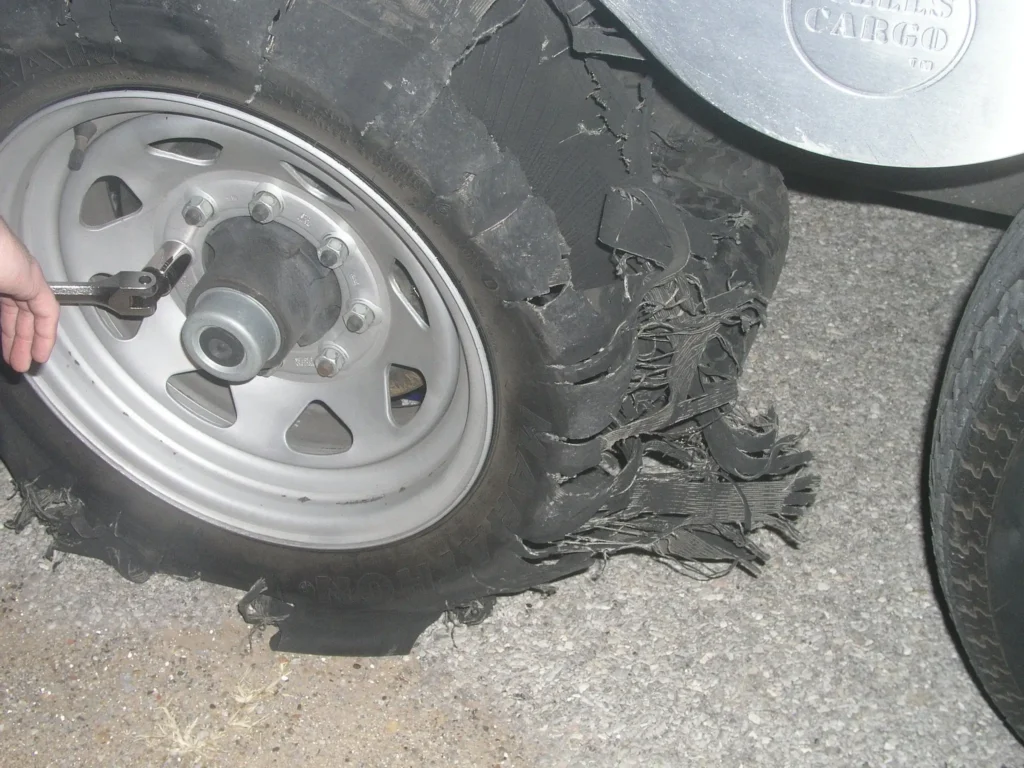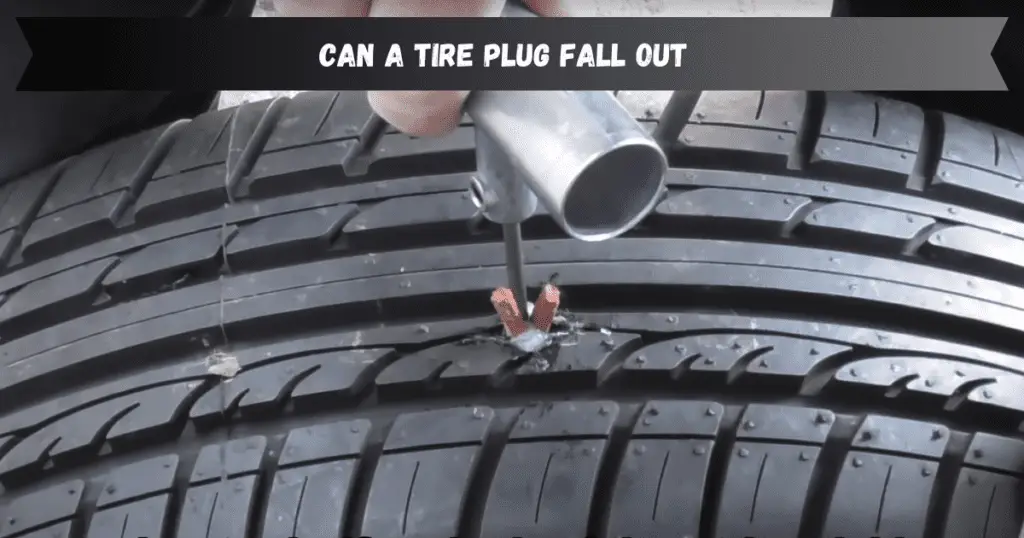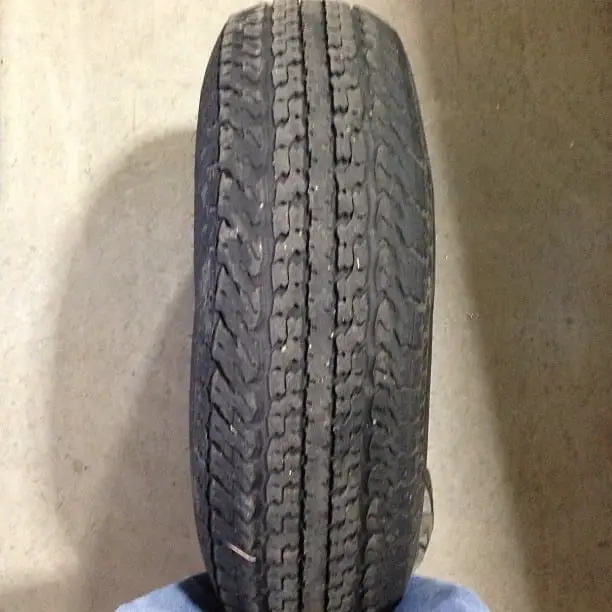Discovering a nail in your tire tread can really deflate your day. But is a tire plug permanent fix or just a temporary workaround? This comprehensive guide tells you everything you need to know about is a tire plug permanent – their purpose, durability, proper use, repair combinations, and what puncture damage is beyond their repair capabilities.
What is a Tire Plug?
A tire plug is an inserted sealing device that fills a puncture hole in the tread to prevent air leakage. Plugs use various materials:
- Rubber – Vulcanized plugs bond with tire rubber for a tight seal.
- Rope – Fibrous plugs fill the hole and grip when inserted to block airflow.
- Plastic – Some patented rigid plastic plug designs incorporate internal rubber rings to seal.
Plugs provide a cost-effective and quick emergency repair for tread punctures. But they differ from permanent internal tire patch repairs.
How Does Tire Plugging Work?
Plugging begins by locating the puncture and enlarging it to allow plug insertion:
- A reamer tool opens up the hole slightly and roughens the inside surface. This improves plug adhesion.
- The plug is then inserted into the puncture channel either with a tool or by hand in the case of string plugs.
- The inserted rope, rubber, or plastic plug expands and seals against the hole walls, closing the airflow path.
- Installation is completed by trimming any excess plug length at the surface.
Is a Tire Plug Permanent Fix?
Tire plugs are designed primarily for temporary emergency use rather than permanent repairs:
- The flexible plug materials lack the longevity of vulcanized rubber patches. They degrade over time.
- Adhesion relies on friction and compression against punctured surfaces, which may weaken.
- Larger holes or flawed installation reduce the long-term sealing capability.
So consider tire plugs semi-permanent. They serve well for smaller punctures in a pinch but are not advised as lifetime repairs.
How Long Can a Tire Plug Last?
Tire plug lifespan depends on several factors:
- Puncture size – Smaller holes increase plug durability. Large holes strain adhesion.
- Installation quality – Proper hole prep and seating the plug correctly improves longevity.
- Tire age – Fresh tires retain air better around plugs versus older, weather-checked rubber.
- Driving conditions – High speeds, loads, and temperatures accelerate air loss. Low-stress driving extends plug life.
Under ideal conditions, a properly installed plug may last the usable tread life of the tire. But err toward replacement for safety.
Is a Tire Plug Safe?
Tire plugs carry some inherent risks:
- Improper hole reaming or plug installation can lead to air leaks and blowouts.
- Using plugs in sidewalls or large shoulder punctures is dangerous due to flex and heat.
- Old patched tires kept in use may eventually fail as the temporary plugs age.
For maximum safety, plugs are best reserved for smaller tread punctures and used in conjunction with internal patches when possible.
Should You Use Tire Plugs?
Tire plugs make sense in certain circumstances when done properly:
- For small punctures under 1/4 inch within the central tread area on passenger vehicles.
- In an emergency far from a tire shop until a new tire or proper repair can be installed.
- When matched with an internal patch for added assurance and air retention.
Otherwise, permanent patches or complete tire replacement provide greater safety and reliability.
Tire Plug Repair Instruction
Is A Tire Plug Permanent. Follow these steps for proper tire plug repairs:
- Locate the puncture and mark for reaming by probing the hole.
- Use a tapered reamer sized slightly larger than the puncture through the tread.
- Insert the appropriately sized plug using the tool or by hand until seated fully below the tread surface.
- Trim off excess plug length using flush cut side cutters. Avoid leaving material exposed.
- Sealant may be applied around the plugged area to improve adhesion.
- Air test for leaks and re-plug if seepage occurs.
- Check tire pressure frequently after to ensure air retention until it can be replaced.
Can You Plug a Tire Sidewall?
Is A Tire Plug Permanent. Plugging sidewall punctures is extremely unsafe and not recommended:
- The sidewall flexes as the wheel rotates, putting stress on a sidewall plug. Air loss is almost inevitable.
- Sidewall punctures are also prone to bulge outward as air pressure pushes on them from inside.
- Heat buildup and friction from flexing can cause plugs to pull free or crack.
Only professional internal patching of sidewalls is acceptable. Temporary plugs fail quickly in the demanding sidewall environment.
Tire Plug vs Patch
Tire plugs differ significantly from permanent patch repairs:
Plugs
- Fill hole from tire exterior
- Simple insertion using basic tools
- Made of rope fiber, rubber, plastic
- Temporary emergency repair
Patches
- Applied to interior tire surface
- Require complete tire removal and buffing
- Rubber compound vulcanized for air retention
- Restores structural integrity
Combining plugs and patches provides added protection against leaks. But patches are superior repairs for non-emergency use.
When to Repair, Plug, Patch or Replace a Tire
Assess puncture damage using these guidelines:
| Damage Type | Recommended Action |
|---|---|
| Punctures under 1⁄4” in tread center | Plug, patch plug, or patch |
| Larger holes up to 1⁄2” in tread center | Patch combined with plug |
| Any shoulder or sidewall punctures | Patch or replace |
| Irreparable sidewall bulges | Replace |
| Multiple repairs previously done | Replace |
| Visible or suspected belt/ply damage | Replace |
Evaluate each incident. But err on the side of replacement when damage extent is questionable.

Tire Plug Safety Tips – Is A Tire Plug Permanent
Follow these precautions and plug best practices:
- Only perform plug repairs with quality kits using proven techniques.
- Limit plugs only to small center tread punctures on light duty vehicles.
- Combine plugs with internal patches for added assurance and longevity.
- Check inflation frequently and replace leaking plugged tires promptly.
- Avoid dangerous DIY sidewall plug repairs under any circumstance.
Exercising good judgment with plug usage and repairs keeps your tires safe. Don’t push them beyond their limits.
Preventing Tire Punctures
Stop tire damage before it starts:
- Maintain proper inflation to prevent sidewall flexing and wheel damage.
- Perform alignments to reduce uneven wear patterns prone to punctures.
- Rotate tires frequently to equalize tread wear.
- Drive carefully avoiding curbs and debris that puncture tires.
With proactive care, your tires can go the distance without impromptu plug procedures. Stay vigilant.
Pay close attention to puncture location and size when assessing tire repairs. In an emergency, quality plugs properly installed provide temporary relief. But for optimal safety and reliability, permanent professional patches or new tires are the best choice when possible. Stay aware of repair conditions and warning signs and don’t push your luck on marginal tires. With prudence and preventative care, you can keep your tires rolling safely and plug-free for the long haul. Want to learn more about Is A Tire Plug Permanent read this.
Frequently Asked Questions
How long will a tire plug last?
With ideal installation in the tread center of a new tire, a plug may last the usable tread life of the tire. But factors like hole size, driving conditions, age, and improper plug use reduce the lifespan to as little as a few months before requiring new repairs.
Is it safe to drive with a plugged tire?
It can be safe temporarily if the puncture is small, the plug is installed correctly, and air retention is verified. But ongoing use risks failure, so have a proper repair or new tire installed soon. Improper plug repairs are always unsafe to drive on.
How many times can I plug a tire?
Tires should only be plugged once within reason. Up to two plugs in a shoulder area may be acceptable, but multiple repairs indicate the tire casing is too damaged for further fixes.
Can a tire be repaired after using a plug?
Yes, tires can and should be reinforced with a combination patch repair even after being plugged as an initial emergency fix. The patch provides greater long-term air retention than the plug alone.
Can a nail ruin a tire?
Yes, a nail or sharp object can easily cause irreparable damage if it penetrates deep enough into the sidewall or punctures through the belt package. Even repairable tread punctures weaken the structure over time.
What is the difference between a plug and a patch?
A plug is inserted externally to fill the puncture hole, while a patch is applied internally and bonds the hole surfaces together. Patches are more reliable, but plugs serve for temporary emergency repairs.
Should I plug or replace my tire?
For small punctures under 1/4” in the central tread, quality plug repairs may suffice temporarily before replacing the tire. Larger punctures, multiple repairs, or any sidewall damage call for immediate tire replacement.
How long can you drive on a plug and patch?
With a proper patch applied over a plug, the repair should last the usable tread life of the tire. Both repairs complement each other when done professional to maximize safety and air retention.
Are plug patches good?
Yes, combining an external plug with an internal patch provides both an instant air seal and long-term structural reinforcement. The patch also protects the plug from flexing damage. This reliable “plug patch” combo repair is preferred when possible.





